This is certainly true at the personal level (chickens? Ed? sons-in-law and grandkids?) and at the macro level too. The three countries I'll have passed through this month (the U.S., France, Poland) have leaders that may have little in common, but they also share something profound: they are products of historically significant twists and turns -- all unknown and unimaginable just a handful of years ago.
The French labor unrest yesterday is important, in that it is the beginning of a spring of labor protest in this country. It's easy to see it as just another French strike. There are so many, that a number of my visits here have coincided with the shut down of one thing or another. (Indeed, as I write this, I am aware of the fact that Air France is striking today over wage issues.) But the walkout on the 22nd was different: the squabble was more than just the usual one between the unions and management or government. When a country's leader positions himself as a disruptor (I'm thinking of the three in power in my three countries), the events that follow (strikes? protest? support rallies?) will determine what the new reality will be for each country. But don't ask me to make any predictions. I'm sure of only one thing -- that we all will be surprised by the outcomes.
This morning, the city seems more like its usual self. Kids back in school, trains moving again.
I don't have much time, but I do make a point of eating a solid breakfast here:
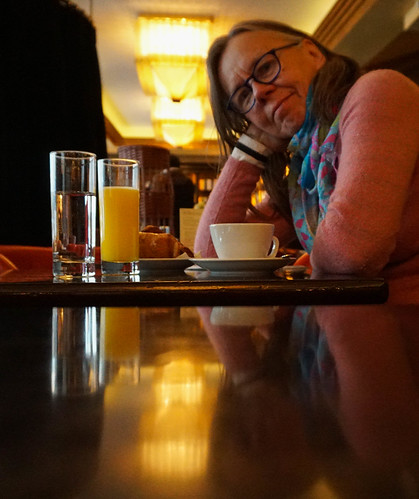
Yep, Les Editeurs, as always.The cafe-restaurant a couple of blocks down the street. Great pain au chocolat and croissants, with added eggs today. I need energy for the walk to the train station.
I could have taken the metro, but I decided, suitcase and backpack notwithstanding, that I can handle the walk. Without the burden of pulling and toting and occasionally photo shooting, it would be (according to google maps) a 45 minute hike to the Gare de Lyon. With the encumbrances, it takes me 42! I am prone to galloping.
(Vignettes from my walk...)
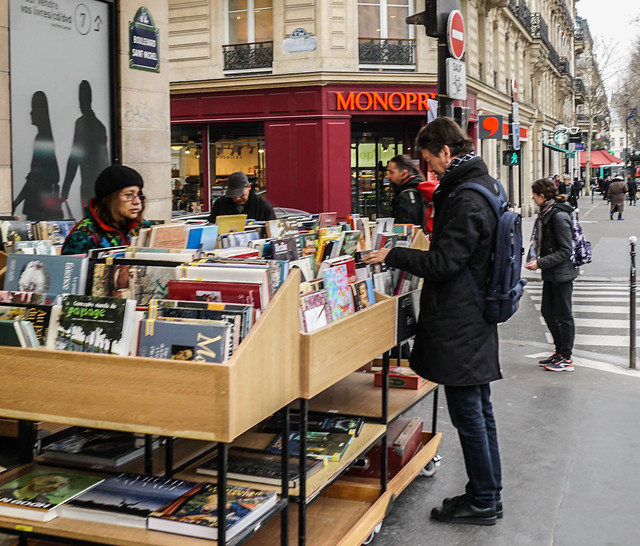
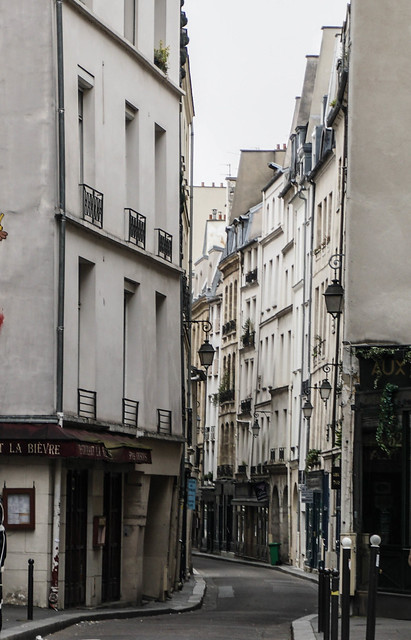
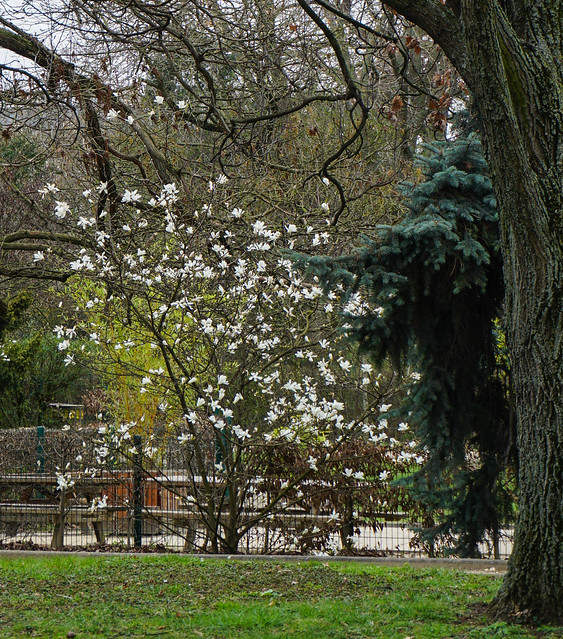
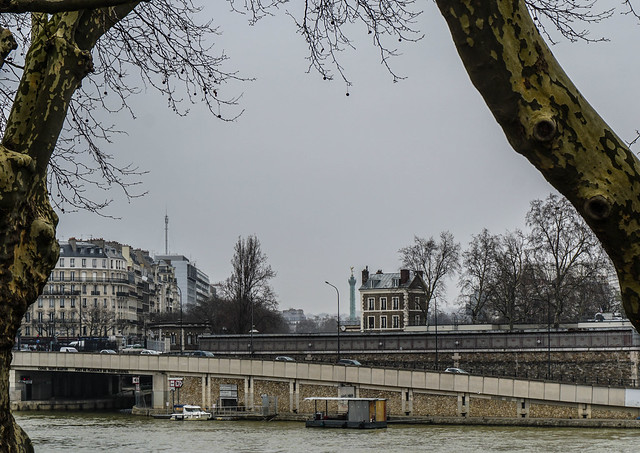
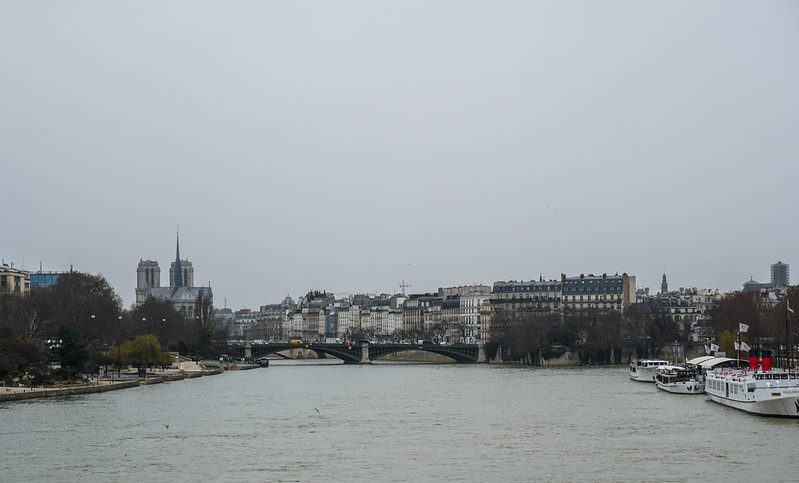
The train is the usual great ride. (Slightly over 300 km, 90 minutes central door to central door.)
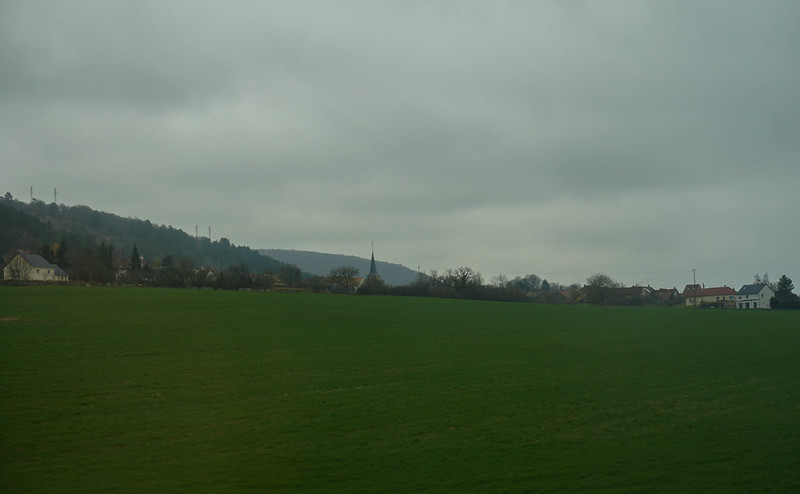
It's packed, taking the overflow from yesterday, but with mandatory reserved seats, it hardly matters. We zip at the usual fast pace and by 1 p.m. I am in Dijon. Because I have so few hours here, I bypass complicated bus schedules and take a cab (a hefty 28 Euros!) to a Burgundian village just 13 kilometers south of the city.
It's odd that in all my travels to France, I've not really spent much time in the region of Burgundy. For those who haven't committed the geography of France to memory, Burgundy is a district to the south and east of Paris. The capital is Dijon, of mustard fame, though I'm told that there is only one remaining family still engaged in the production of Dijon mustard. The rest have shifted their operations to Eastern Europe. Perhaps Dijon mustard is now made in Poland. Forget the mustard though. For me, Burgundy is synonymous with great wine. A bottle of white burgundy is, in my view, the best of the best. It's made from the chardonnay grape, but oh, what a chardonnay grape it is!
My love for these special wines lead me to Chablis (located in northern Burgundy) some fifteen years ago. I visited wine cellars, wrote a short piece about the people who devoted all their efforts to making this great wine and then I went home and somehow never returned. One good reason may be that you can buy good Burgundy wines anywhere, including in Madison, Wisconsin. So there needs to be another draw. Or does there have to be a reason? Maybe if you're like me, you'll head for Burgundy just because. I want to wander through these unfamiliar villages, through the hills and river valleys. I want to explore.
I'm staying in Gevrey-Chamertin, a village of about 3000. It would be a curious choice if I were to be focusing on wine, because most enthusiasts associate it with Grand Cru Pinot Noir wines -- the best of great reds -- and I rarely drink red wine. But again, wine (or at least drinking wine) is not the main theme of this journey. I'm open to all sorts of exploartions!
My home for three nights is at Les Deux Chevres (the Two Goats). It's housed in an ancient winery, recently restored and turned into a guest house by Paul and Jolanta (he, a retired attorney from England, she, his wife from Poland). The place is beautiful!
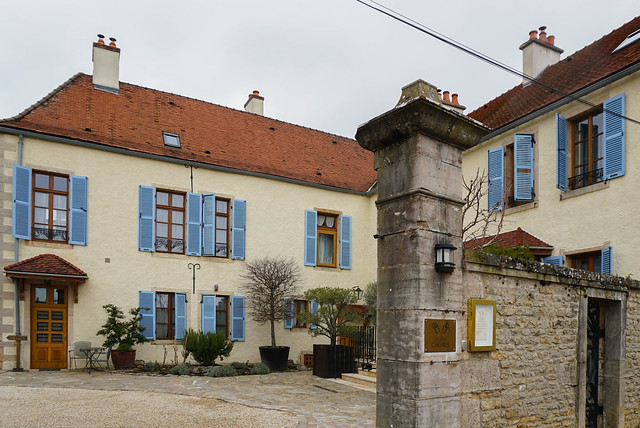
I had requested a room with a good view and I got it. Out the bedroom windows I have both the village and the vineyard.

(Same thing out the bathroom window. I never take baths, but I may take one here. How lovely to bathe and look out on vines!
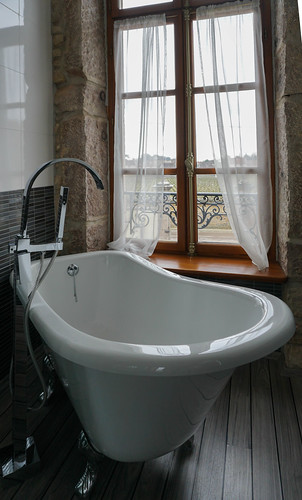
I asked the innkeepers to help me fill the rest of the day. It's cloudy, with a threat of drizzle. It's pretty cold. If I were to hike around, tomorrow would be a wiser day for it. Paul tells me he set up some wine tastings for another set of guests. One backed out, the other is still on board. Would I like to fill in the empty spot and join the others for a second tasting?
Did I say that this trip was not really about wine?
I'm completely open to the idea. Thomas, the assistant here who, at his main job, works in the wine industry (just about everyone who lives in these villages works in one way or another in the wine industry, he tells me) will drive me around.
It's a wonderful way to get to know all the villages and vineyards between Dijon and Beaune (if Dijon is the administrative capital of Burgundy, Beaune is the wine capital of the region). Thomas knows everything.
Top of the hills -- those are usually the grand crus (the finest of the fine: they need the stress of a soil that has washed away some of its organic compounds and sent them flying down the hill; you get smaller yields but the quality is over and beyond.). The middle of the hills -- those will often be premier crus (next in the line of greatness). At the bottom -- the village wines. And on the other (left) side of the road -- the most basic coteaux (I guess in the US we'd simply call them table wines).
I look out at the vineyards -- still bare, vines still being clipped and trained (this has to take place before the first buds turn green -- sometime by early to mid April).
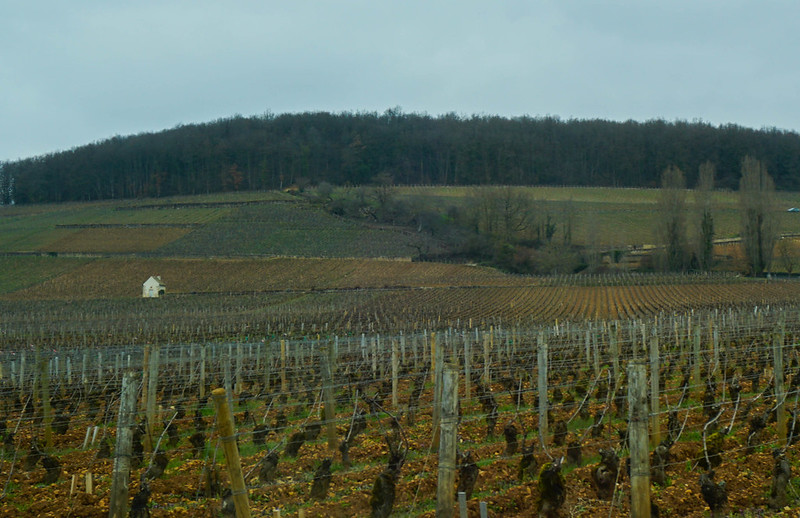
I notice a few smoking barrels where clippings are burned.
Are they still being used? I thought they were phased out. One of those EU things. (Wood smoke pollutes.)
They have two years to stop burning. It's a problem -- figuring out what to do with the clippings.
Despite the gray skies and the bareness of the vines, it is a beautiful landscape!
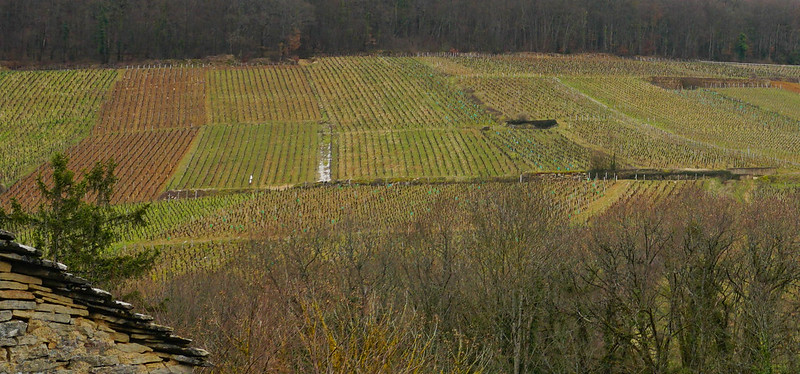
Some twenty minutes later, we approach the hamlet of Pernand-Vergelesses (what a mouthful for a place that boasts only 269 residents!).
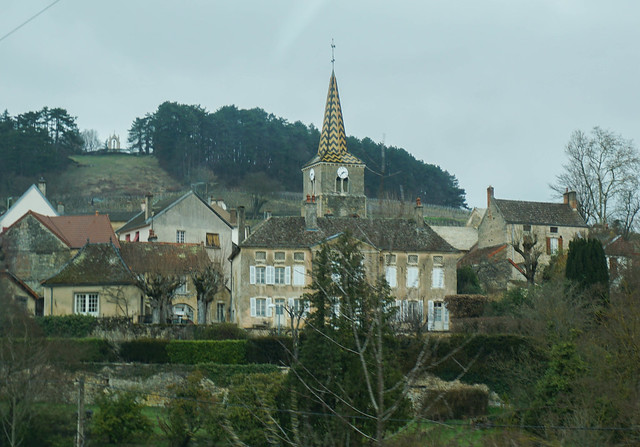
Paul has set up a tasting at the Domaine Pavelot, a third generation wine maker, run now by Lise and her brother Luc.
Everything that I know about wine I have learned from my visits to the small wine producers of France. Nearly all have given an enormous amount of time and energy to the visit, answering my endless questions with stories rather than a quick restatement of a fact.
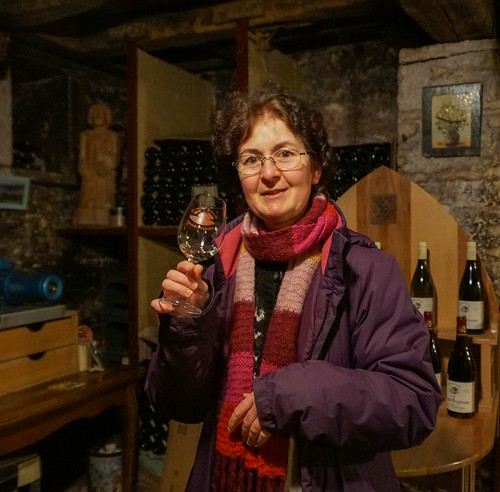
The wines at Pavelot are wonderful. I mean, pour me a taste of a Grand Cru or Premier Cru white Burgundy and I'll be entranced. But do it from a good winery, by one of the owners, who stands before me as if I were the only visitor she's seen in ages (even as in reality she does this at least once a week) and I am in complete awe.
Before I leave, I ask her if there are kids in line to take over the winery in their time. She pauses as if to think about it. My brother's son -- right now he says he is interested in biology. So I don't know. My son, he alternates between wanting to be a winemaker and a fireman, but he's only six! You know, in the past, there was a strong push for the next generation to take over. We are less like that now.
I smile. Deep down I hope her boy chooses wine making over fire fighting.

Our second visit is to a somewhat bigger place. In the village of Nuits-St-Georges...
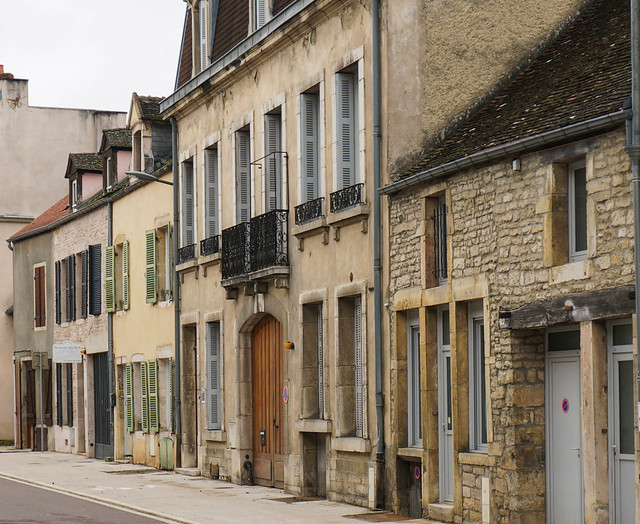
... we stop at the Marchands Tawse winery. Here, the partnership is more complicated and perhaps I feel more of a distance from the passion, energy and toil of the producers. But the larger point is that I should have stopped at one domaine visit. I am still taking in what I learned at Pavelot. It doesn't help that at Marchands Tawse, the great wines are the red wines. I taste them, I'm impressed by them, but I don't have a sense of the connection between winemaker and her or his product.
I take a pause at the inn, trying to imagine how life would proceed if you were in the wine business here. The meaning of the words "late April frost" is a bother to me back at the farmette. It's ruinous in Bourgogne. In 2016, the region lost nearly 70% of its grapes because that late frost took down the grape blooms. And if you want to go organic (Pavelot is certified that), well now, that calls forth so many issues and worries that you may just want to back away and grow strawberries instead (though I wouldn't rush toward strawberries... we still haven't figured out how to keep the animals from eating our entire lovely crop).
Dinner time. I am so hungry for it! That large breakfast is but a very distant memory. There are two village eateries -- Chez Guy and Bistrot Lucien. Chez Guy seems to win over more people and so I go there. It's a lovely walk -- a mere half a kilometer from the guest house -- and it serves tasty, well prepared food. With a million bottles and some half bottles of Burgundy wines to choose from for your dining and eating pleasure. (Luckily, there were only five half bottles of white Burgundies to choose from. I was much relieved: it took me long enough to decide between them.)
So I'm here, eating a lovely dinner of ham, then fish, then cheese.
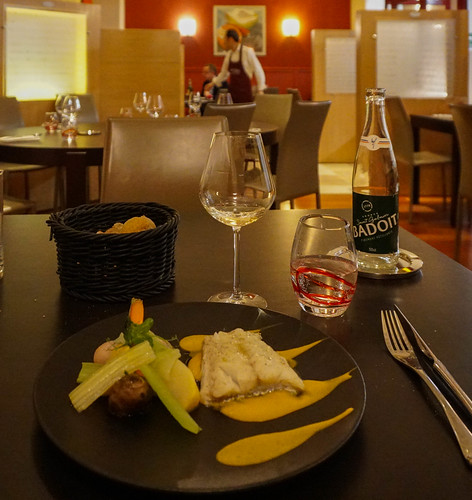
Tomorrow I will explore. Tonight ? Oh please -- the sooner I hit that bed the better.


No comments:
Post a Comment
Note: Only a member of this blog may post a comment.